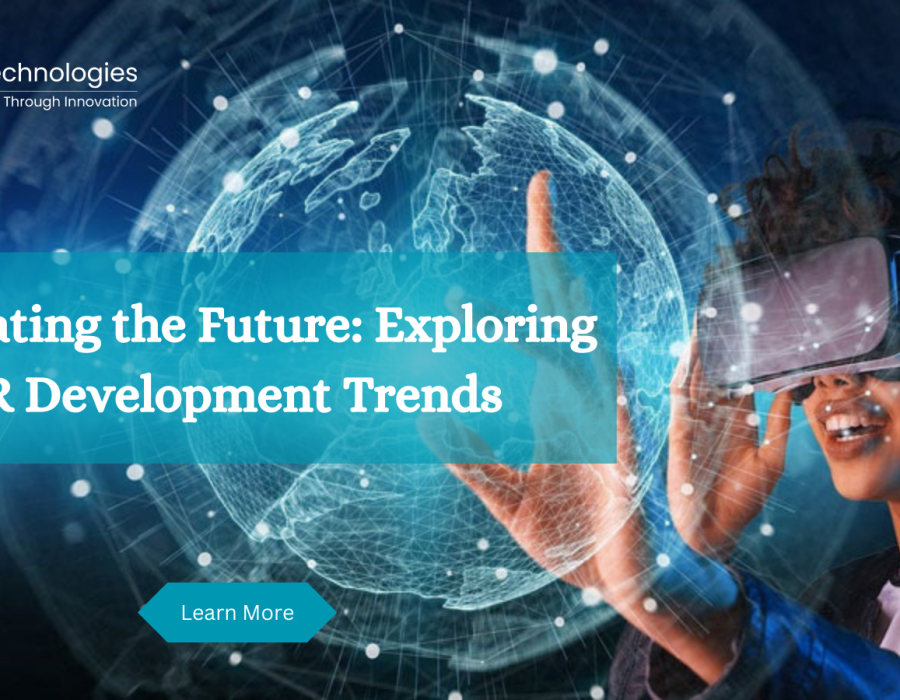Virtual Reality (VR) has transitioned from a futuristic concept to a burgeoning reality, reshaping industries and transforming experiences. With VR technology advancing, developers and users have access to new opportunities. In this blog, we'll explore the latest trends in VR development, highlighting key innovations and future directions.
- Immersive Storytelling
One of the most exciting trends in VR development is the focus on immersive storytelling. VR's ability to create deeply engaging, interactive narratives is revolutionizing entertainment and education. Developers are leveraging this technology to craft experiences where users are not just passive observers but active participants. This trend is evident in VR films, educational modules, and even VR-based therapy sessions, where immersive storytelling plays a crucial role in user engagement and effectiveness.
- Advancements in Hardware
The evolution of VR hardware is a significant driver of the industry's growth. Headsets are becoming more comfortable, affordable, and feature-rich. Innovations such as eye-tracking, haptic feedback, and improved motion sensors are enhancing the immersive experience. Additionally, standalone VR headsets, which don't require a connection to a PC or console, are making VR more accessible to a broader audience.
- Enterprise VR Solutions
While VR is often associated with gaming and entertainment, its applications in enterprise settings are expanding rapidly. Virtual reality is being used in training, remote collaboration, and virtual meetings by businesses. For example, VR training programs in industries like healthcare, aviation, and manufacturing offer safe, cost-effective ways to simulate real-world scenarios. Virtual collaboration tools are also gaining traction, providing immersive environments for teams to interact and work together regardless of physical location.
- Social VR Platforms
One of the most noteworthy trends in VR is the rise of social platforms. These platforms create virtual spaces where people can interact, socialize, and collaborate. Facebook's Horizon Worlds and VRChat are prime examples of social VR environments that enable users to create and explore virtual worlds together. These platforms are not just for casual interaction but also hold the potential for virtual events, conferences, and networking opportunities.
- Enhanced Realism with AI
The development of virtual reality is being significantly advanced by artificial intelligence (AI). Virtual environments are becoming more responsive and realistic thanks to AI algorithms. From intelligent NPCs (non-player characters) in VR games to AI-driven analytics in enterprise VR applications, the integration of AI is enhancing the overall VR experience. AI is also being utilized to customize virtual reality experiences by tailoring content to each user's tastes and usage patterns.
- Cross-Platform Development
As the VR ecosystem grows, the need for cross-platform development is becoming more critical. Developers are focusing on creating VR experiences that can be seamlessly accessed across different devices and platforms. This trend is driven by the desire to reach a wider audience and ensure a consistent user experience. Tools and frameworks that facilitate cross-platform development are gaining popularity, enabling developers to build once and deploy across multiple VR systems.
- VR in Healthcare
The healthcare industry is increasingly adopting VR for various applications, from surgical training to patient therapy. VR simulations provide medical professionals with realistic practice environments, improving their skills and reducing risks. In therapy, VR is being used to treat conditions such as PTSD, anxiety, and chronic pain. The immersive nature of VR allows patients to engage in therapeutic activities in a controlled, safe environment.
- Spatial Computing
In VR development, spatial computing—the blending of digital and real-world environments—is becoming more and more popular. This technology enables users to manipulate virtual objects in a physical space, creating a more intuitive and immersive experience. Applications of spatial computing range from architecture and design to retail and logistics, where users can visualize and interact with 3D models in real-time.
Osiz: Leading the Way in VR Development
Osiz Technologies stands at the forefront of VR development, driving innovation and setting new standards in the industry. As a leading VR development company, Osiz combines expertise with a deep understanding of emerging technologies to deliver cutting-edge VR solutions. With a focus on immersive experiences, Osiz enhances storytelling, enhances realism with advanced AI integration, and pioneers cross-platform development to ensure widespread accessibility.
Through strategic partnerships and a commitment to pushing the boundaries of VR technology, Osiz empowers businesses across sectors to harness the full potential of VR. Whether it's creating interactive training modules, virtual collaboration platforms, or transformative healthcare applications, Osiz continues to lead the charge in navigating the future of VR development.
Conclusion
The future of VR development is dynamic and promising, driven by continuous innovation and expanding applications across various industries. With Osiz Technologies, a leading VR Development Company, the possibilities for VR are limitless. By embracing these trends and technologies, developers and businesses can navigate the evolving landscape of VR and unlock new opportunities for growth and engagement. Together, we can shape a future where virtual reality enriches lives, transforms industries, and redefines what's possible.
https://www.osiztechnologies.com/ar-vr-development-company
For Business Proposal :
Call/Whatsapp: +9194421 64852
Telegram: Osiz_Tech
E-Mail: [email protected]
Skype: Osiz. tech
Website: www.osiztechnologies.com





Comments